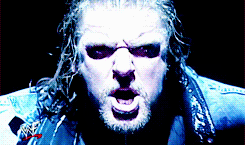Ethel Johnson holds the distinction of being the first female African-American wrestler, although by some accounts her sister Babs Wingo began training before she did. Their younger sister Marva Scott would join them shortly after.
She made her debut as a 16-year-old in 1950. It had been just 3 years since Jackie Robinson broke baseball’s color barrier in 1947 when Johnson and her two sisters began trailblazing a similar path in pro-wrestling. She was trained by and would later serve as a challenger to Mildred Burke.
Johnson was inducted into the WWE Hall of Fame Legacy Wing this week. Unfortunately, it appears WWE used the wrong footage for her induction.
Y’all need to fix this because if you’re going to use my aunt Ethel in the hall of fame at least reach out to the family! And the video you guys used isn’t her!
— VIRGOAT (@missezrenee) April 7, 2021
“The footage of Ethel Johnson that they showed was not of Ethel Johnson it was of Sandy Parker, who was an African-American woman wrestler who came along probably, I’m going to say 15 years later,” said Dave Meltzer recently on Wrestling Observer Radio. “Ethel Johnson and Sandy Parker didn’t look anything alike.”
Ethel Johnson was the FIRST BLACK CHAMPION EVER! If you’re going to represent her, represent her CORRECTLY!
— VIRGOAT (@missezrenee) April 7, 2021
Ethel Johnson retired in 1976 at the age of 41, finishing up her career with the AWA. She would pass away at the age of 83 in 2018.
Johnson and her two sisters are featured in the documentary “Lady Wrestler:
The Amazing, Untold Story of African American Women in the Ring.” Johnson appears in the documentary.
“Lady Wrestler: The Amazing, Untold Story of African-American Women in the Ring” is a documentary that chronicles the stories of Babs Wingo, Ethel Johnson, Marva Scott, Ramona Isbell and dozens of other women who braved racism and sexism to succeed in the male-dominated world of professional wrestling during the sport’s golden age in the 1950s, ’60s and ’70s. These courageous women raised families while blazing a trail for female athletes long before many of the breakthroughs of the civil rights and feminist movements,” reads a description of the film.
A clip from the film is below:
Results 1 to 1 of 1
-
04-09-2021, 12:10 AM #1
 WWE Uses Wrong Footage For Ethel Johnson’s HOF Induction
WWE Uses Wrong Footage For Ethel Johnson’s HOF Induction


BOW DOWN TO THE KING

***GAME OVER!***







 Reply With Quote
Reply With Quote